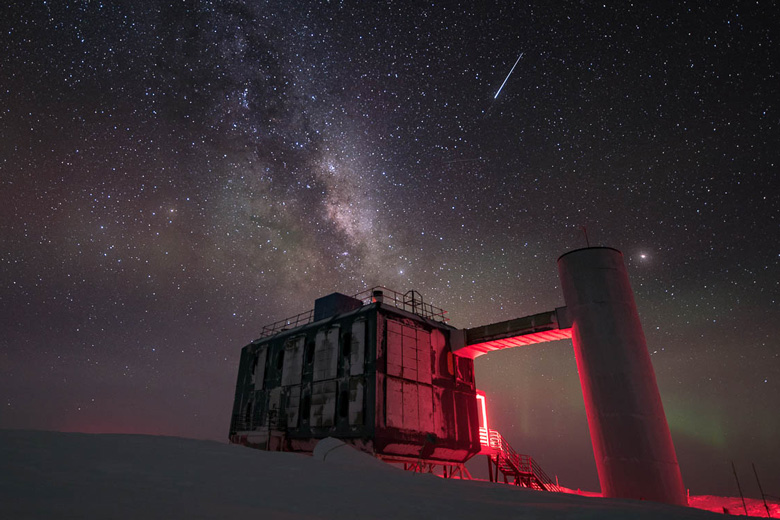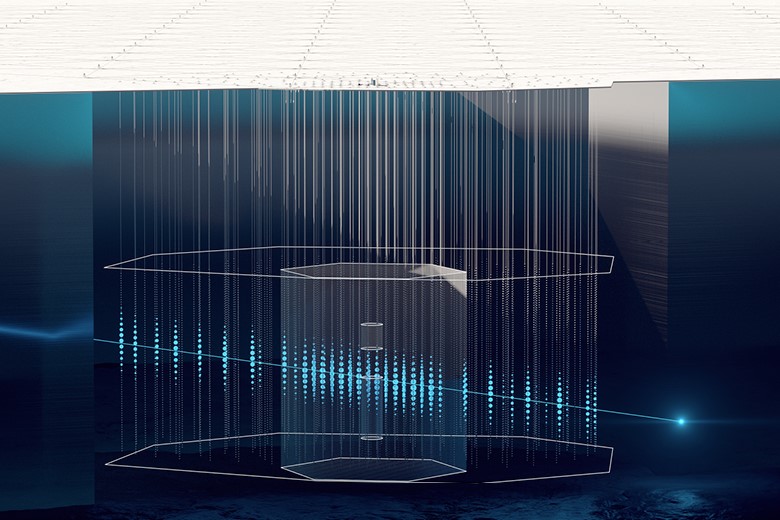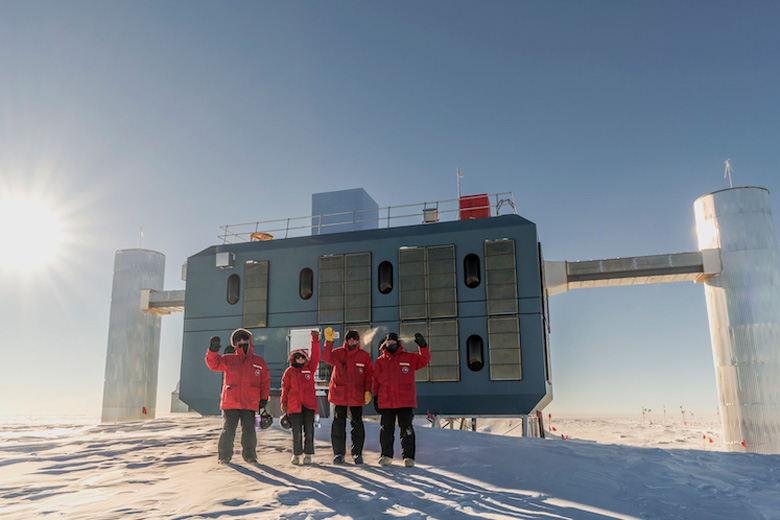
For the neutrino research of the future
Over the last decade, IceCube has allowed scientists to finally start detecting high-energy neutrinos from space. These observations opened up a new window to the most extreme areas of our universe. The groundbreaking successes with IceCube have already demonstrated the enormous discovery potential of neutrino astronomy. IceCube-Gen2 will pave the way for the next series of scientific breakthroughs.

The world’s largest particle detector
IceCube uses the glacial ice at the South Pole as a gigantic detector medium to hunt for cosmic neutrinos. It is already the world’s most advanced neutrino telescope, but the upgrade to IceCube-Gen2 will enlarge the detector by a factor of ten. Instead of individual discoveries, this expansion will allow scientists to perform precision measurements of the origin and energies of cosmic neutrinos.

A strong international network
The IceCube project is an international endeavor. As the second largest contributing nation, Germany plays a major role in developing not only IceCube’s research activities, but also the instrumentation that makes those activities possible. German members of the consortium include two Helmholtz centers and ten universities, bringing together years of experience and broad expertise to advance IceCube-Gen2.

The next generation of talent
Astroparticle physics is a very attractive field for aspiring scientists of all ages, offering a wide range of career prospects. These range from STEM activities for kids, tweens and teens, to degree programs, all the way up to professorships.
